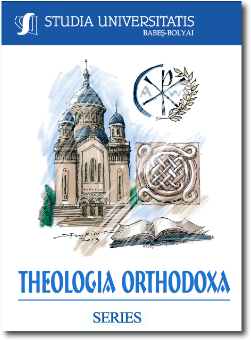BASIL THE GREAT ON THE ESCHATOLOGICAL UNITY OF THE BODY OF CHRIST
BASIL THE GREAT ON THE ESCHATOLOGICAL UNITY OF THE BODY OF CHRIST
Author(s): Sergey TrostyanskiySubject(s): Christian Theology and Religion, Theology and Religion, Systematic Theology
Published by: Studia Universitatis Babes-Bolyai
Keywords: Saint Basil the Great; Unity of Church; Eschatology; Body of Christ; Eastern Orthodoxy;
Summary/Abstract: Basil the Great in the fourth century AD argued that all material entities are constantly carried away by motion. He spoke of the flow of existence as “ever pressing on and passing away and never stopping in its course.” His general conjecture in respect with spatiotemporal existents was that motion and time constantly shift and twist their ephemeral selves, leading them to annihilation. Hence, no entity that is subject to time persists so as to preserve its essential core. The Body of Christ in its temporal dimension, i.e. the visible Body, may also follow a sort of current. It may also experience constant change. The lack of ontological stability is the main characteristic of all unredeemed existents. The Body of Christ, on the other hand, is not a mere temporal entity. It has an eschatological self that will never be destroyed. This eschatological unity will never fade away. It is ordered by a different kind of time. This article aims to shed light on certain foundational aspects of Basil’s theory of eschatological unity and of the changing self. It endeavors to explicate Basil’s eschatological threads presented in the Hexameron. It attempts to demonstrate that Basil’s subtle and nuanced analysis of the subject offers an explanatory framework capable of making sense of more recent events in ecclesiastical history.
Journal: Studia Universitatis Babes-Bolyai - Theologia Orthodoxa
- Issue Year: LXIV/2019
- Issue No: 1
- Page Range: 21-37
- Page Count: 17
- Language: English

